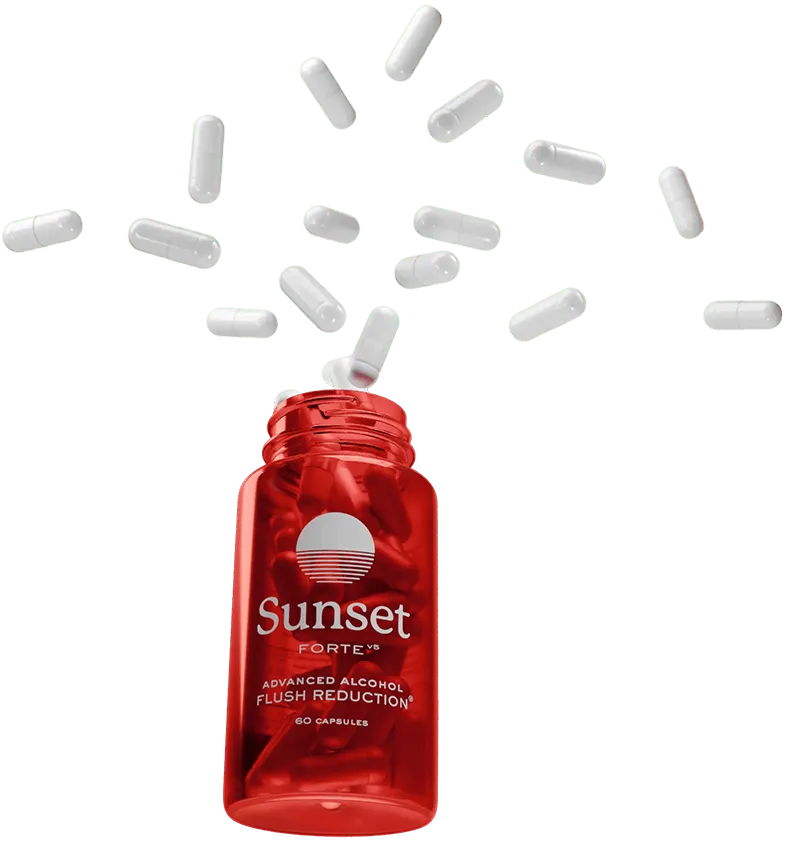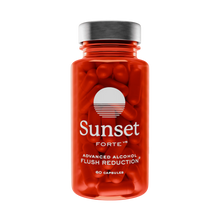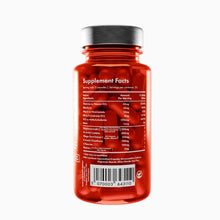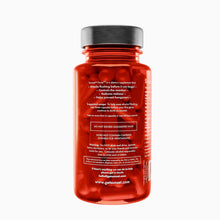ALDH2 Deficiency Foods to Avoid: High Acetaldehyde Foods That Cause BIG Problems
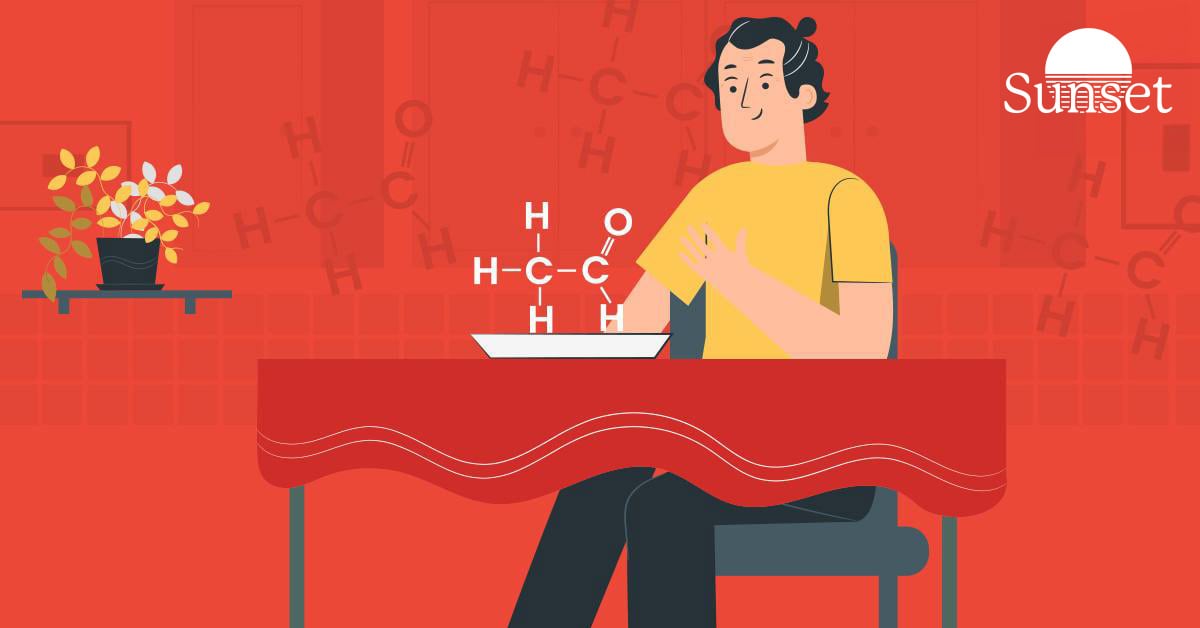
- High acetaldehyde foods to avoid
- Key foods to avoid for ALDH2 deficiency
- Drinks high in acetaldehyde
- Starting an ALDH2 deficiency diet
Share this article
Copy and paste this link
For those with an ALDH2 deficiency, metabolising acetaldehyde can be a real nightmare. Many people with this ineffective liver enzyme know that acetaldehyde from alcohol will give them painful and uncomfortable symptoms. This can leave you abstaining from alcohol consumption altogether. But did you know that acetaldehyde is found in food as well?
It's true - alcoholic beverages aren't the only thing that can contribute to toxic acetaldehyde accumulation. If acetaldehyde is a problem for you with alcohol, it may also help to avoid acetaldehyde in food, too. And in this article, we'll help you do just that by covering the ALDH2 deficiency foods to avoid. You'll also gain insights as to what a ALDH2 deficiency diet consists of so you can take control of your health and comfort once and for all.
Keep in mind, though, to ensure that your body is prepared to deal with the affects of drinking alcohol or eating food containing acetaldehyde, we recommend taking Asian flush pills. This is the #1 way to avoid the problems that come with acetaldehyde exposure and prevent or treat red face after drinking.
Now - before we get into the main question you came here with - what are the ALDH2 deficiency foods to avoid - let's provide some context on how alcoholic beverages aren't the only thing that can cause problems for those with this condition.
Are There Really High Acetaldehyde Foods That Can Cause Problems for Those Deficient?
We know this may be news to you - but yes. There are high acetaldehyde foods that generate the same unpleasant symptoms and health risks as consuming alcohol. Those who are ALDH2 deficient must be aware of this.
It doesn't just create unpleasant symptoms like shortness of breath from alcohol or nasal congestion after drinking alcohol, either. Consuming high amounts of food with increased levels of acetaldehyde can also contribute to higher cancer risk in the digestive tract. With that said, allow us to break down the top aldh2 deficiency foods to avoid.
The Most Important Aldh2 Deficiency Foods to Avoid: High Acetaldehyde Foods That Can Cause Problems
We're going to break up our review of the most important high acetaldehyde foods you need to stay away from into different types of foods. And to kick things off, we'll go with one of the most detrimental - fermented foods.
Fermented foods
Fermented foods are on the most common offenders for those with this deficiency. Acetaldehyde is created by microorganisms during the fermentation process so it can be found in fermented foods, such as:
- Vinegar
- Yogurt
- Cheese
- Sour cream
- Fish products
- Soy products
- Pickled or canned vegetables
Fruit
Acetaldehyde can be found naturally in some fruits, such as:
- Melon (including watermelon and Oriental melon)
- Pineapple
- Orange
- White peach
- Nectarine
- Very ripe fruits
Additives & Flavour
Some food and drink items have added acetaldehyde as “food flavouring.” Some of these items include:
- Pastries
- Juices
- Soft drinks
- Dairy products
- Desserts
Want to learn more about this toxic chemical? We recently wrote a complete guide on how to reduce acetaldehyde in body. This is a great resource for those who struggle with this condition - check it out! For now, let's talk about another important component of your aldh2 deficiency diet - avoiding certain drinks.
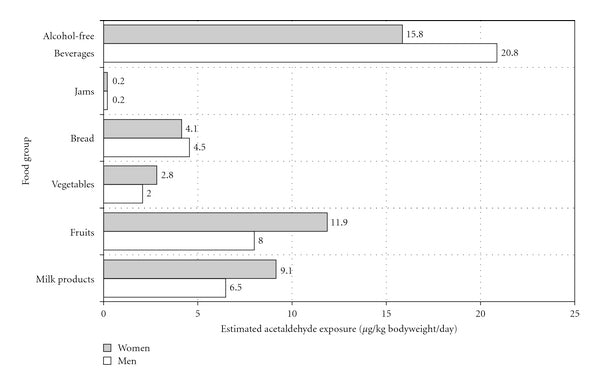
Drinks High in Acetaldehyde to Avoid as Well
If you're going to follow an aldh2 deficiency diet, it's not just important to know what foods contain acetaldehyde. You also need to avoid a myriad of drinks that contain this compound.
There is obviously acetaldehyde in alcoholic beverages - but did you know there are also trace amounts of acetaldehyde in coffee, and many other alcohol-free beverages too? It's true. We'll cover all that you need to know about this below - starting with the most common offender: alcohol.
Alcohol
Acetaldehyde in alcoholic beverages gives those with an ALDH2 deficiency the worst symptoms and it’s often from alcohol that users realise they have a deficiency.
Because there is a much higher level of acetaldehyde in something like white wine compared to yogurt, alcohol will produce a bigger reaction. It also means that if you have numerous alcoholic drinks in one night, your body will become overwhelmed with acetaldehyde. You would need to eat a lot of yogurt to get a similar reaction.
Some alcoholic beverages with acetaldehyde in high amounts include:
- Wine (sparkling, white and red wine)
- Whisky
- Makgeolli (Korean rice wine)
- Beer
Non-Alcoholic Drinks
Drinks without alcohol can still be sources of acetaldehyde. Some drinks even have this chemical added for additional flavour. Some non-alcoholic drinks that have acetaldehyde include:
- Coffee (both ground and instant have varying levels of acetaldehyde)
- Early Gray tea
- Orange pop and other soft drinks
- Fruit juice such as apple juice

Getting Started With an ALDH2 Deficiency Diet
If you have an ALDH2 deficiency, you can speak to your doctor about certain foods and drinks you should cut from your diet and what you should simply reduce.
We do know that continued exposure to high acetaldehyde concentrations can not only lead to alcohol flush reaction (or Asian Flush) but also increased risks of cancer. It is classed as a Group 1 carcinogen by The International Agency for Research on Cancer (IARC) for a reason.
Foods with higher levels of toxic acetaldehyde can cause increased cancer risks, but that doesn’t necessarily mean that they need to be cut from your diet completely. Simply eating these foods in moderation can help! Watching your exposure to acetaldehyde, especially with alcohol, can help reduce your symptoms and acetaldehyde accumulation in the body.
However, it's impossible to completely avoid acetaldehyde in our everyday lives. This chemical is commonly found in air pollution, cigarette smoke, food, drinks and even naturally in our bodies. But by being better informed about acetaldehyde, we can limit our exposure.
Final Thoughts on Following an ALDH2 Deficiency Diet: Drinks & Foods to Avoid
That concludes our breakdown on following an ALDH2 deficiency diet. We hope this helps you regain control of your social life and health. Remember to avoid fermented foods, certain fruits, and drinks like coffee. With that said, you don't have to let your ALDH2 deficiency or sudden intolerance to alcohol affect you any longer - you can still eat and drink as normal with this incredible Asian blush cure. Learn more at Get Sunset!
Enjoy drinking again and get Sunset Alcohol Flush Support for
33% off while stocks last!
What’s inside?
We use a pharmacist-formulated blend of Glutathione, Dihydromyricetin, Cysteine, L-Theanine, & B Vitamins to stop alcohol flushing before it can begin.
Learn more
94% of people who try Sunset are satisfied with the results.
